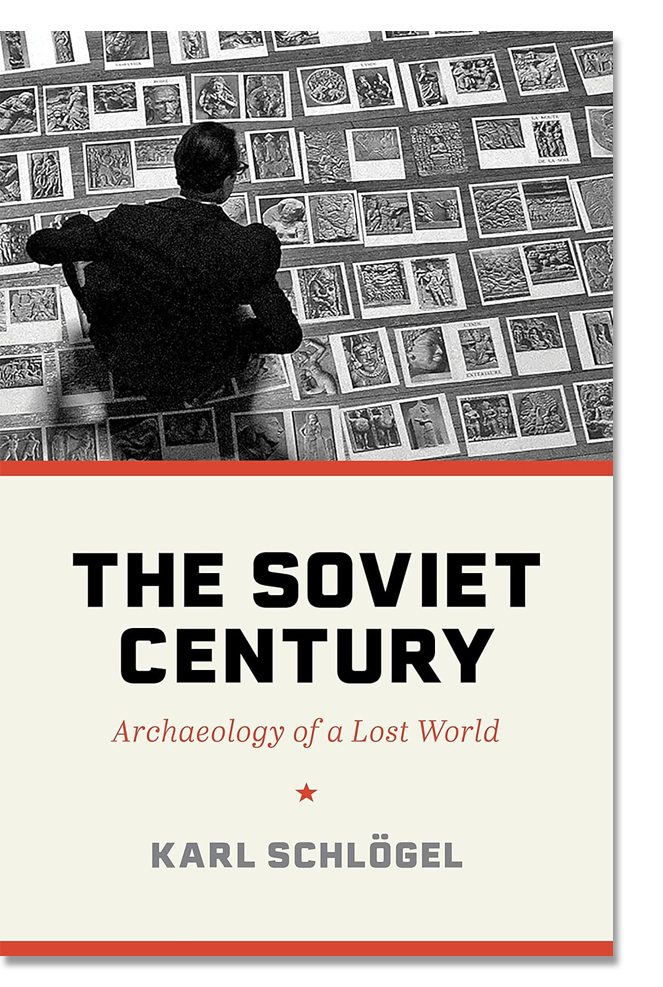A Time Capsule of the Soviet Life
Reviewed:
by Karl Schlögel
Translated by Rodney Livingstone
Princeton University Press, 928 pp., $17.95 (Hardcover)
Publication Date: 4/14/23
Karl Schlögel’s The Soviet Century is a time capsule of captivating cultural details and vivid accounts that reveal the societal turbulence and nightmarish conditions of the Soviet Union. Born in the former German Democratic Republic following World War II, Schlögel is a renowned German historian specializing in modern Russia and Eastern European history. In his latest book, which he subtitles an ‘archaeology of a lost world,’ Schlögel excavates sixty-nine years of artifacts and anecdotes in an effort to transport readers into a world unimaginable to those who never lived in it.
Structured as a musée imaginaire, The Soviet Century stimulates all five senses—depicting summer days at dachas, evoking the polluted air of industrial cities, decoding cryptic prison tattoos, and recounting the phenomenon of Krasnaya Moskva perfume—all working in unison to construct a Soviet metropolis rarely seen by Westerners. Each section functions like a kaleidoscope, every twist revealing a mesmerizing blend of personal accounts, statistical reporting, and vivid imagery that uncovers a different aspect of the former hegemon. The task of the reader is to digest these unraveled components, assess the ways in which they overlap, combine, and develop, in order to assemble a rough idea of Soviet society.
From the unprecedented construction of Magnitogorsk to the massive White Sea–Baltic Canal, the USSR transformed Russian society from a backward, largely agrarian country into an industrial powerhouse—condensing the century-long development of Western nations into a matter of five to ten years. Schlögel is keen to note that this unprecedented development came on the backs of hundreds of thousands of forced laborers, many of whom faced starvation and fatal working conditions. This commitment to technological victory at any cost reflects what Walter Benjamin called the “aestheticization of violence.” Beyond its industrial growth, Russia’s urban population skyrocketed from 26.3 million to 56.1 million in just thirteen years, prompting sweeping urban development policies—such as Kommunalkas (Коммуналки) and Khrushchevkas (Хрущёвки) —to mollify the housing crisis. However, these now-notorious structures, still scattered across the Eastern Bloc, crammed families into squalid living conditions.
Despite its vast scope, Schlögel’s attempt to tie every cultural feature directly to the nefarious acts of the political regime leaves glaring blind spots in an otherwise literary diorama of Soviet life. Key annual events—such as International Women’s Day and unique New Year’s traditions—as well as beloved bands like Кино, which rose to prominence during the eras of glasnost and perestroika, would have only enhanced the work. Nevertheless, Schlögel refrains from turning the work into an clichéd indictment of the Soviet Union or casting excessive moral blame in retrospect, wisely noting:
“We can complain about the delusions of earlier generations, but they did what they could with the means available to them at the time, and with the expectations and hopes that fulfilled their lives. Whether we have truly surpassed them is unclear.”
Though daunting in size and panoramic in scope, The Soviet Century is remarkably readable and engrossing chapter after chapter. For Slavophiles and Westerners alike, it serves both as a historical exposé and a bewitching introduction to a culture unlike any other. Complemented by more than eighty illustrations, Schlögel serves as your travel guide into a collapsed world that has left an indelible impression not only on generations of Russians but also on the world as a whole.
